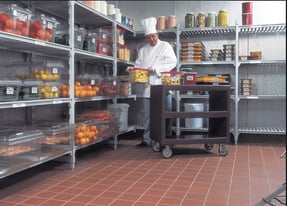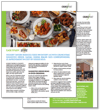
- Home
- Crunchtime Blog
- New Year Resolutions for Restaurants in 2020

It's a new year and you're excited to improve your restaurant brand in 2020. The question is, how will you do it? What changes can you make to your restaurant operations that will help achieve the results you want this year?
Here are a few New Years resolutions for restaurants to help make 2020 your best year yet:
1. Optimize your inventory levels


PRO TIP: Read the Hickory Tavern case study.
Learn how The Hickory Tavern reduced inventory levels by 25% and achieved a sustained 3% reduction of costs of goods sold with CrunchTime!
2. Let automation technology perform basic tasks
Employee turnover will likely be a major point of emphasis for your brand in 2020. You know it's important for your restaurants to ensure compliance with operational standards, while also delivering a consistent, high quality guest experience. But how do you do this when people are joining and leaving the brand all the time?
This is where you let your technology go to work. Simplifying and automating your back office tasks ensures everyone at your restaurant - whether they are seasoned veterans or new to the job - are connected to the company’s mission and are making the right decisions at the right time. By automating jobs such as scheduling, sales forecasting, food prep, vendor ordering, and receiving, they can be performed at a high level, even in environments with heavy turnover. With accurate data and automation that aligns with the brand's operational standards, you'll get the best possible results.
With accurate data and automation that aligns with the brand's operational standards, you'll get the best possible results.
3. Gain a single version of the truth (SVOT)
If you are driven to improve operational efficiency this year, you know that your data is your best friend. You also know that in 2020, just as was the case in 2019, your data and where it's warehoused is increasingly complex. There are more data sources than ever. To ensure that your inventory levels are accurate and optimized and that automated tasks are performed at the highest possible level, all of your data needs to be centralized or at least synchronized so it's easily accessible and actionable.
Gaining an SVOT means that all mission-critical information is together, and operators know how the restaurant is doing at all times because they have all the data they need. This often happens when food and labor operations are integrated because you can connect your two cost centers with sales data and determine how much your spending versus how much you should be spending.
Resolve to follow these three steps for a more efficient and profitable 2020.
Share this post
Related


Winning the Restaurant Food Inventory Battle

